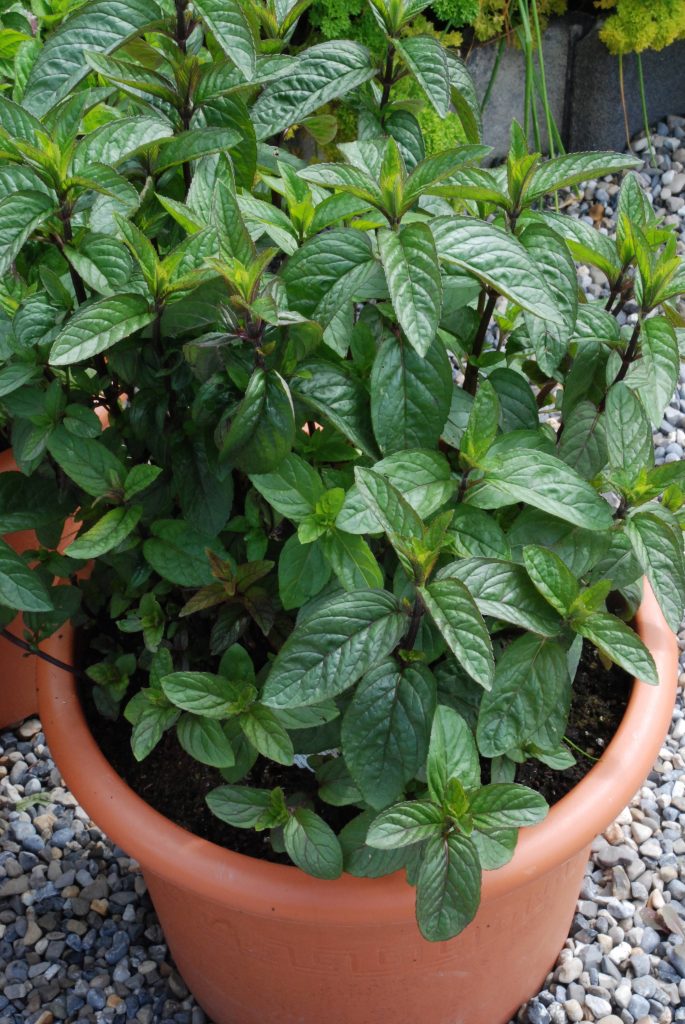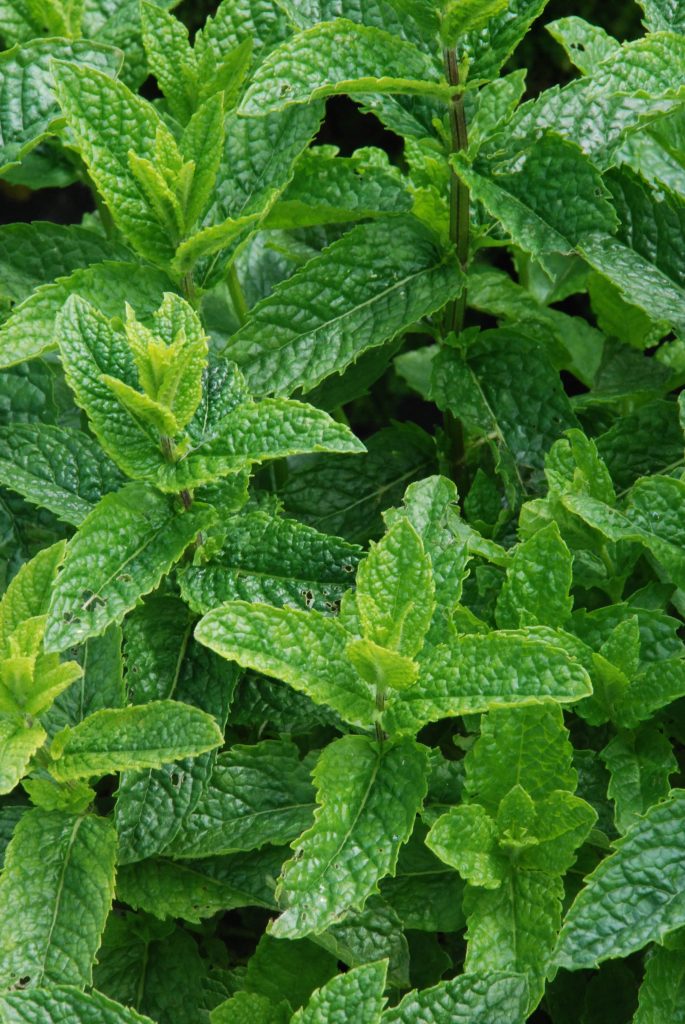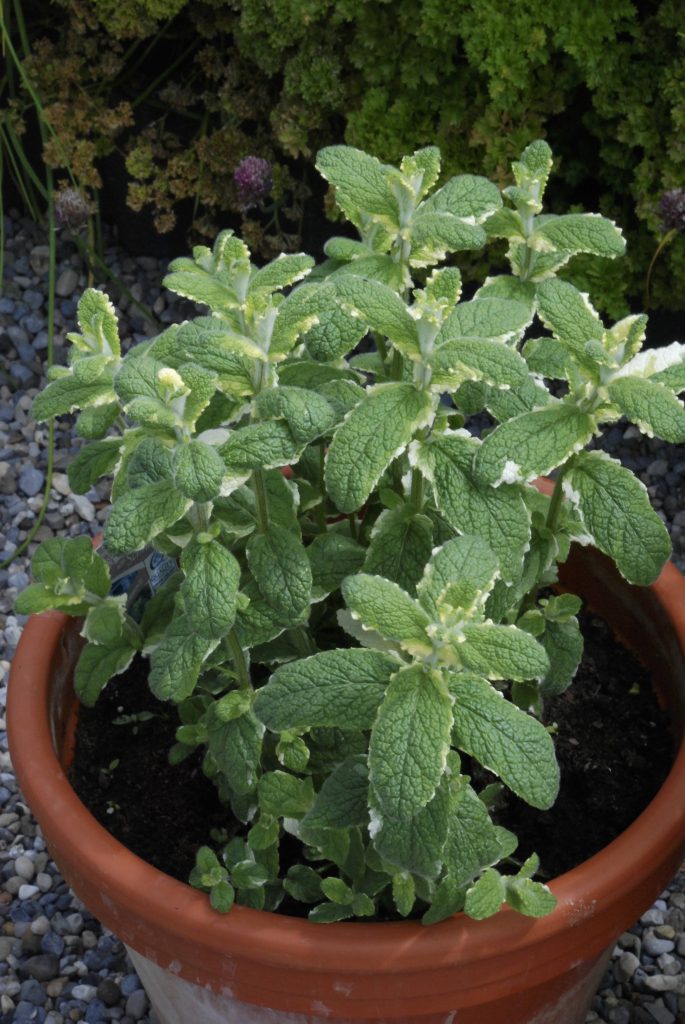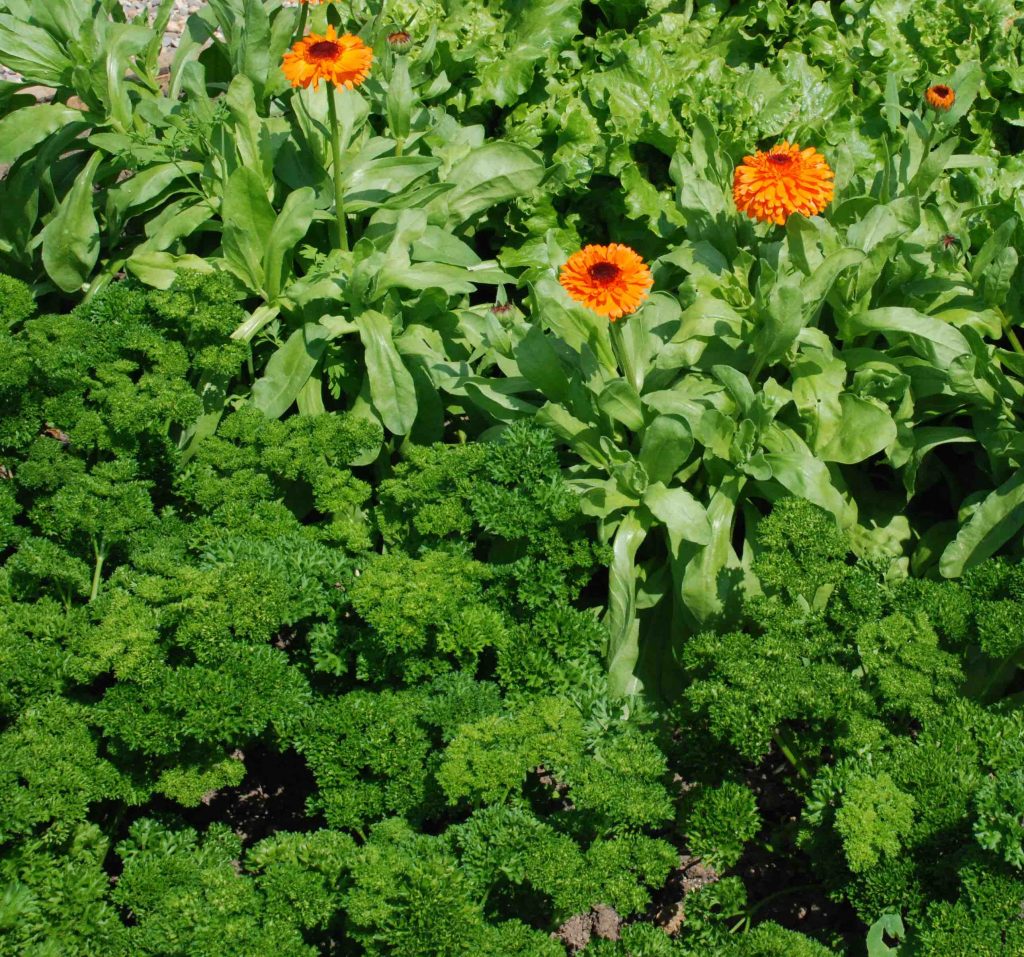It won’t be too long before it is time to dig up the first new potatoes. In fact, there may be a few in the bags I planted in the polytunnel, but I will wait a little longer. But even outside, early potatoes are usually ready to lift in early July. A good sign is when the plants start to bloom because then there are usually some tubers ready to lift though the longer you leave them, the bigger the crop. And once you have some new potatoes lifted the next things you need are some butter and some mint.

Mint can be a difficult plant to accommodate in the garden, not because it is difficult to grow, rather because it can be invasive. Plants produce long, creeping stems, at ground level, that root as they spread and a small plant can rapidly become a vast swathe of stems. Mint likes to move so if you chop these all off to keep the plant small it will dwindle away. So in small gardens it is best to plant it in a pot. You can grow it in pots with the bottom cut off, sunk into the soil but it will still fling stems over the edge and you do need to replant it when it exhausts the soil in the pot. So I find it simpler to grow it in pots stood on the path.
Unlike some herbs, that like dry, hot conditions, mint prefers a little shade and plenty of moisture. It also likes rich soil. I grow mint in pots in a mix of multipurpose compost and John Innes No 3, with some controlled-release fertiliser added, when I remember. This will keep them growing strongly for the season and, ideally, I will dig it up, divide the clumps and replant about a quarter of it, every spring. Because I have added John Innes to the compost the pot will survive and grow the second year too but annual repotting is best to maintain vigour.
Not only is mint useful in the kitchen – for mint sauce, for adding to boiled new potatoes, Mojitos, fresh mint tea and so much more – there are many kinds to try. It is always worth getting something special and you will soon find out which you like best.

My favourite is Moroccan mint (above) which is perfect for mint tea but I use it for most things. It is a wonderful ‘mint green’ too, if that doesn’t sound odd. I also grow the variegated apple mint (below), which is pretty enough for the border but is a spreader so needs watching. The plain apple mint is a bigger plant, with softly hairy leaves and one of the best all-purpose mints.

If you harvest your mints regularly, pinching out the shoot tips, you will delay flowering but, especially if they dry out, they will eventually bloom and the flowers are loved by bees and butterflies.
Mint is largely free of problems but cuckoo-spit bugs like to set up home on the plants, covering themselves in their bubbly ‘nests’ – you will also see them on lavender and willow herbs. In some years the fungal disease rust can be a nuisance and if this strikes it is best to cut back the whole plant and water it well to promote fresh growth.
A ‘pest’ that I have not seen in decades is ‘mint beetle’. My great aunt and uncle, who lived near Godalming, had a true cottage garden with mints running about through the blackcurrant bushes and in summer, these were bejewelled with metallic, emerald green mint beetles. I was enchanted by them and would gladly sacrifice some leaves to see these nestling in my mint. Look for the brilliantly coloured adults from now until September. It is found on wild mint, which grows in wetlands, so look for it on riverside walks. It is usually restricted to the south east of England.
Other herbs that can be grown and sown now include all the annual herbs such as dill, coriander and chervil and parsley. Parsley can be sown now, when it will germinate quickly, and provide tasty leaves all summer and autumn and into next spring.

Jobs for the week
Control bindweed. The twirling stems of bindweed are growing fast and need to be treated now or they will swamp garden plants and this feeds the roots which will spread through the soil. Get a wipe-on or ready to use spray containing glyphosate and treat every shoot you can – making sure you do not get the weedkiller on your plants. This will help weaken the roots – simply pulling up the stems will not control what is going on underground.
Feed veg. Most vegetables should be growing well and a boost with a general fertiliser will be beneficial. It is important to feed onions, to boost growth, before the end of June.
Some late-blooming herbaceous plants benefit from the ‘Chelsea chop’ – pinching out the growing tips to make them bushier. The season is late this year so now is the time to do this. Take out the tips of perennial helianthus, asters, solidago and heleniums.
Tomatoes should be growing well now and need feeding every week. Support them and remove side shoots unless they are ‘bush’ tomatoes.